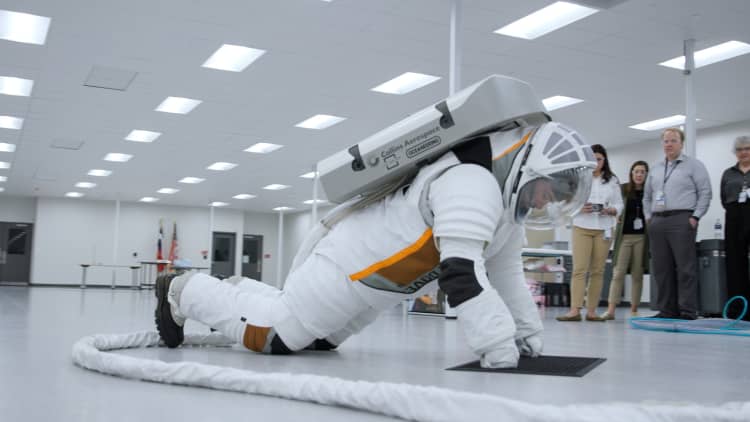NASA has been using the current spacesuits on the International Space Station for decades and they are showing their age.
"The spacesuits that are being used now in the International Space Station by NASA are suits that were really designed in the '70s. These are suits that were originally designed for the space shuttle program. Due to the lack of funding, NASA kept working on them, kept repairing them and maintaining them for all these many years. But really, these are suits that are at the end of their useful life," says Pablo De León, director of the Human Spaceflight Laboratory at the University of North Dakota.
NASA has had issues not only with finding the proper sizes to fit its increasingly diverse astronaut corps, but also with degradation of some suit components. Now the agency is turning to two commercial companies: Axiom Space and Collins Aerospace, a subsidiary of Raytheon Technologies, to build and maintain its new generation of spacesuits. Under the Exploration Extravehicular Activity Services Contract, or xEVAS, NASA is providing Collins and Axiom, along with a number of their industry partners, with up to $3.5 billion through 2034. Axiom won the first $228.5 million contract to design the suits that will be used during NASA's Artemis moon missions and Collins won the second $97.2 million contract to design and develop a new generation of suits for the International Space Station. Since NASA is purchasing its suits from Collins and Axion as a service, the vendors are free to make additional suits for non-NASA customers as well
"The beauty of this contract is the functional requirements for these two suits are very, very close. So at any given time, we could ask either of those contractors to actually start working on the other what we call platform," says Lara Kearney, manager of NASA's Extravehicular Activity and Human Surface Mobility Program. "We also have what we call an on-ramp clause in the contract, which means if another company comes into play and they have the capability to compete, we can actually bring them on to the contract and allow them to compete on task orders as well."
Kearney says the continued competition helps incentivize the contractors to perform on cost and schedule, and ultimately helps keep the expense to the government down. CNBC got a behind-the-scenes look at the new suit that Collins Aerospace is designing in collaboration with partners ILC Dover and Oceaneering. NASA hopes to use this new suit on the International Space Station by 2026.
Watch the video to find out more.



